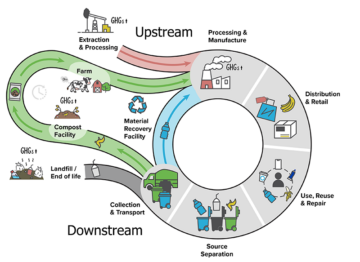This is an excerpt from “Eating to Extinction: The World’s Rarest Foods and Why We Need to Save Them” by Dan Saladino. Published by Farrar, Straus and Giroux. Copyright 2021 by Dan Saladino. All rights reserved.
We were born to eat wild. For most of our history, human survival meant foraging for plants, collecting nuts and seeds, and tracking and killing animals. By any measure, hunting and gathering has been our most successful lifestyle to date. In the late 1960s, the anthropologists Richard Lee and Irven DeVore estimated that of the 85,000 million people who had ever lived, 90 percent were hunters and gatherers and only about 6 percent lived as farmers. The barely significant number that remained were experimenting with life in the industrialized world. Our physiology, psychology, fears, hopes and dietary preferences have been shaped by our evolution as hunters and gatherers. Our bodies haven’t changed that much but our way of life and our diets have, profoundly and at speed.

Of the 7.8 billion of us on the planet today, just a few thousand people continue to source most of their calories from the wild. Colonialism has historically played its part in this decline, and other forces are at work today. The farms, plantations and industries that feed most of us are destroying the habitats of many traditional societies. Manufactured and branded products from the industrialized world make it into the furthest reaches of the Amazon forest and the African savannah, in a form of neocolonialism through food. If the last of the hunter-gatherers ceased to exist — which could happen within our lifetimes — the world would lose valuable knowledge amassed over countless generations, and a link to the way of life that formed us. It would be a tragic end to a 2-million-year-long story.
But look more closely and it becomes clear that “wild” food isn’t just the preserve of the few remaining hunter-gatherers. Indigenous farming communities all over the world also still rely heavily on wild food. The Mbuti people in the Congo eat more than 300 different species of animals and plants in addition to the cassava and plantains they cultivate. Across India, 1,400 wild plant species feature in rural diets, including 650 different fruits. And whereas many Indigenous people get the bulk of their calories from wheat, corn, rice and millet, most of their micronutrients (the vitamins and minerals) still come from wild food. Rice farmers in north-eastern Thailand, for instance, forage for a wild spinach found around the edges of their paddies, a food which complements the starchy grain they grow. The choice between the cultivated and uncultivated is not a binary one — it is more of a sliding scale. It has always been this way. The first farmers to sow seeds would have starved if they hadn’t continued to hunt and forage for wild food, as would the hundreds of generations of farmers who followed. In more modern times all human societies which have experienced scarcity have looked to the wild for sustenance. At the beginning of the 20th century, Sicilians who went hungry after poor harvests searched for snails to eat; Americans in the depression era turned to wild blackberries and dandelions; people in wartime Britain gathered nettles; and in China during the Great Famine of the 1950s, people looked to bitter grasses for survival.
Today, 1 billion people source at least a portion of their diet from the wild, whether for sustenance or pleasure (the figure is 3.3 billion if you include fish). In Oaxaca in southern Mexico, city dwellers queue at markets to satisfy cravings for toasted flying ants. In Maputo, Mozambique, affluent eaters pay top dollar for cuts of wild “bush” meat. And on the outskirts of Moscow, New York, Tokyo and London, you can find urban foragers venturing into woodlands to find berries and mushrooms when they are in season. But even though the call of the wild remains strong, the practice and the knowledge of how to find and eat wild foods are disappearing. So too, of course, are the wild plants, animals and their habitats. By the time you get to the next full stop, the world will have lost the equivalent of a football pitch of primary forest. Deforestation to make way for monocultures of soy, palm oil and cattle has contributed to thousands of the world’s wild food species becoming endangered or threatened with extinction. One source of hope is the world’s Indigenous people, who make up less than 5 percent of the total human population but inhabit 25 percent of the world’s land surface. In the 21st century they are among the most important stewards of the natural world and defenders of biodiversity. The wild foods they protect are crucial for all of our future food security, including the “crop wild relatives” that may hold the genetic keys to problems such as drought and disease resistance.
We might not be able to imitate the hunter-gatherers that remain, but we can and should be inspired by the people who continue to venture into the wild.
Wild foods are also becoming endangered at a time when we are struggling to understand what our diets should look like. We look to incomplete science for answers but ignore lessons already learned. Although wild foods provide less than 1 percent of all of the calories consumed around the world today, they account for a much higher proportion of nutrients. Among hunter-gatherers such as the Hadza, rates of obesity, type 2 diabetes, heart disease and cancer are so low that cases are hard to find. This is partly because of the rich diversity of foods they eat and the high levels of fiber they consume (five times more than people in the industrialized world). Bitterness and sourness, both associated with wild foods, are often signals of health-giving properties. In the Peruvian Amazon, people gather camu camu (Myrciaria dubia), a fruit which resembles a cherry and contains 20 times more vitamin C than an orange.
The foods we are about to meet in this part all help to explain why wild foods matter. The answers to the mess we’re in, environmentally and physically, will not, of course, include a return to the wild, but they can be informed by the knowledge that has carried our species this far, over millennia. We might not be able to imitate the hunter-gatherers that remain, but we can and should be inspired by the people who continue to venture into the wild.








